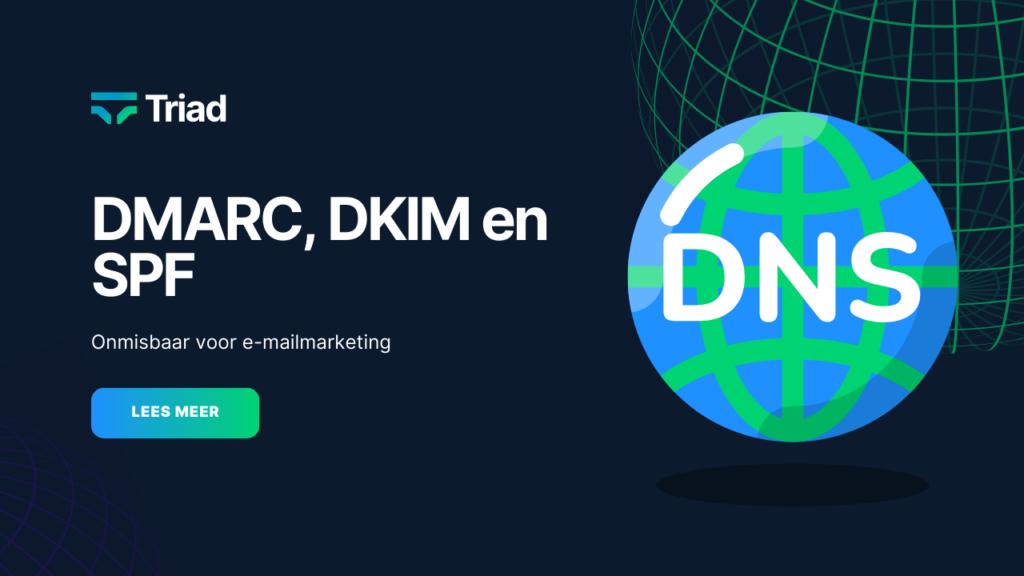DMARC, DKIM and SPF: Essential for Email Marketing

DMARC, DKIM, and SPF are important for the security and reliability of your email campaigns. These protocols protect against email fraud such as phishing and spoofing, and improve the deliverability of your emails. DMARC prevents malicious parties from using your domain for fraudulent emails, DKIM ensures the integrity of your emails, and SPF determines which email servers are allowed to send emails on behalf of your domain. By correctly configuring these protocols, you increase the effectiveness of your email marketing and gain the trust of your recipients.
Benefits of DMARC
- Protection against phishing and spoofing: Prevents malicious people from abusing your domain.
- Increased delivery reliability: Reduces the chance of emails being marked as spam.
- Insight and control: DMARC reports provide insight into email senders on behalf of your domain.
Benefits of DKIM
- Sender verification: Confirms that the email has not been modified since it was sent.
- Improved deliverability: Increase the chances of your emails landing in the recipient's inbox.
- Protection of brand reputation: Helps prevent email fraud.
Benefits of SPF
- Prevents spoofing: Only authorized servers are allowed to send emails on behalf of your domain.
- Better email delivery: Increases the reliability of your emails with recipients.
- Strengthening security: Prevents malicious people from abusing your domain for spam.
How to Set Up DMARC, DKIM and SPF
DMARC Setup
- Create a DMARC record: Add a DNS TXT record to your domain.
- Configure the record:
- Policy (p): Determines what happens to unauthenticated emails. Values: 'none', 'quarantine', 'reject'.
- Rua: Email address to receive DMARC reports.
- Add to DNS: Add the DMARC record to your domain's DNS settings.
Example of a DMARC record:
plaintextCopy codev=DMARC1; p=none; rua=mailto:dmarc-reports@yourdomain.com
Setting up DKIM
- Generate a DKIM key: This can be done via your email provider.
- Publish the public key: Add a DNS TXT record to your domain with the public DKIM key.
- Configure your email server: Make sure emails are signed with the private DKIM key.
Example of a DKIM record:
plaintextCopy codedefault._domainkey.yourdomain.com IN TXT "v=DKIM1; k=rsa; p=YourPublicKey"
Set SPF
- Create an SPF record: Add a DNS TXT record to your domain.
- Define allowed servers: Add IP addresses or domains that are authorized to send emails.
- Add to DNS: Add the SPF record to your domain's DNS settings.
Example of an SPF record:
plaintextCopy codev=spf1 include:spf.protection.outlook.com -all
Conclusion
DMARC, DKIM and SPF are essential for secure and reliable email campaigns. They protect your domain from abuse and improve the deliverability of your emails. By setting up these protocols correctly, you increase the effectiveness of your email marketing and gain the trust of your recipients. Take the time to implement these security measures and ensure that your email campaigns are successful.
